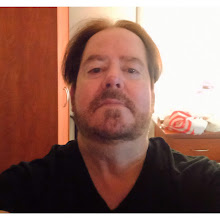As Bay Area Catholic leaders are increasingly under pressure to name priests accused of abusing children, a Minnesota law firm published a report Tuesday identifying 212 priests in the San Jose, Oakland and San Francisco dioceses accused of sexual misconduct involving kids.
The report names 135 accused offenders in the Archdiocese of San Francisco, 95 in the Oakland diocese and 33 in the San Jose diocese, though 51 names are duplicates because some of the priests worked in more than one Bay Area diocese. Earlier this month, the San Jose diocese released its own list of credibly accused priests that had only 15 names, which this report calls “deficient.”
Jeff Anderson & Associates, a law firm that has represented a number of Catholic priest abuse victims in California and elsewhere, compiled the 66-page report, which included the mugshots of priests, their parish work history and a short synopsis of their alleged abuse.
Jeff Anderson & Associates, a law firm that has represented a number of Catholic priest abuse victims in California and elsewhere, compiled the 66-page report, which included the mugshots of priests, their parish work history and a short synopsis of their alleged abuse.
“The data reveals the scandalous scale of hundreds of priests assaulting thousands of minors from early history to the present in these Dioceses,” the report concludes. “The data collected suggests the patterns and practices of Church officials, including the orchestration of an institutional cover-up of an enormous magnitude.”
Related Articles
Related Articles
- A priest, a sex addict, an exorcist
- The stories behind each of San Jose’s 15 accused priests
- San Jose diocese names 15 priests accused of abuse
- San Jose priest, registered sex offender, faces new molestation charges
For example, the Oakland Diocese in 2004 released a list of 24 credibly accused priests, and an investigation by this news organization in 2008 reported that 64 priests who had served in the East Bay had been accused of sexual abuse, either while working within the Oakland Diocese or at another outside the area. The investigation noted if a priest was named in a lawsuit, internal church records or another one of the thousands of documents reviewed. All but one of those was included in the law firm’s list Tuesday.
One of the most egregious abusers on the list is Stephen Kiesle, a priest who was placed on three year’s probation in 1978 for molesting two boys at Our Lady of the Rosary in Union City and was later arrested and charged with molesting three girls at Santa Paula in Fremont in the late 1960s and early 1970s. He was was allowed to continue serving in a number of Bay Area parishes and ministries until the mid-1980s before being defrocked in 1987. He was sentenced in 2004 to six years in prison for abusing a 15-year old girl.
New on the list is Milton Eggerling, a priest who was accused of sexually abusing a boy in Austin, Texas, from 1973 to 1978. Before leaving for Texas, Eggerling was at Corpus Christi in Piedmont. He returned to Oakland in 1980 and later worked at the San Jose Diocese and at St. Patrick’s Church in Rodeo. He died in 2008. Anthony Rodrigue of the Dominican order served at St. Albert’s Priory in Oakland but was not named as an abuser by the Oakland diocese in 2004 despite having been sentenced in 1998 to 10 years in prison for abusing youth in Southern California before he came to the East Bay.
At least eight priests’ only East Bay connection was attending or being stationed at the Jesuit Theology Seminary in Berkeley.
On the law firm’s list connected to the San Jose Diocese, some names that did not appear in the diocese’s own report last week were already well-known offenders who were not parish priests but had a connection to the San Jose area. For others, there appears to be either no connection to the San Jose diocese or a tenuous one.
The San Jose diocese released a statement Tuesday saying they are reviewing the names on the list and will comment Wednesday.
“It is heart-breaking to see the list of so many who have betrayed and abused innocent children in these horrific ways in the list released today by Anderson & Associates,” the statement said. “Diocese of San Jose remains resolute in our commitment to provide healing and reconciliation for the victims/survivors. This will allow us to begin the process of restoring trust that has been painfully eroded by those in positions of leadership and trust by being accountable and transparent for what has happened in the past within the Diocese of San Jose.”
The new report shows a list of priests accused locally and elsewhere over the decades ended up at two South Bay retirement homes — the MaryKnoll retirement house in Los Altos and the Sacred Heart Jesuit Center in Los Gatos.
They include Jerold Lindner, spiritual adviser for a lay organization called Christian Family Movement, who was accused of molesting boys at a religious camp in the Santa Cruz Mountains in the 1970s. One case made headlines in 2016, when one of his accusers, Will Lynch, attacked Lindner at the Jesuit Center where he was living. A jury later acquitted Lynch of assault.
William Farrington, a Jesuit accused in 2012 of molesting a Bellarmine College Preparatory School student in the 1960s, also lived at the Jesuit Center. Farrington was disciplined by the Jesuit order and banned from working with minors, according to a Mercury News report at the time.
The late John Rodriguez Moniz, also from the Los Gatos retirement home, had been convicted of lewd conduct with a young girl for a 1991 incident while visiting St. Mary’s parish in Los Gatos, also reported by the Mercury News. At the MaryKnoll retirement center, James E. Avery plead guilty and was sentenced to prison for abusing a 10-year-old boy in 1978 in Philadelphia. He later recanted his confession, according to BishopAccountability.org and the Philadelphia Enquirer.
Two priests who had brief stints at the campus ministry program at Santa Clara University in the 1970s and 1980s also were accused of sex crimes while working out of state. James F. Kuntz pleaded guilty to possession of child pornography in 2008 while in New Jersey, according to published reports, and Edward Buenter was accused in a civil lawsuit of abusing four boys in the late 1960s.
In a statement, Santa Clara University said it supports “the release of the names and statuses of clergy credibly accused of sexual abuse.” It also said it would “cooperate with any lawful investigation.”
The Oakland diocese has vowed to release a list of priests credibly accused of child sex abuse, and the San Francisco archdiocese has hinted that it also is looking at doing a similar self-reporting. The Oakland report is expected late next month. It’s not clear what effect the law firm’s disclosure — or previous reporting — will have on Oakland’s report.
Oakland diocese spokeswoman Helen Osman said she could not comment on Tuesday’s report while it prepares its own list.
“We are actively reviewing files,” Osman said. “We don’t have a definitive date yet for the release, but I am anticipating immediately after Thanksgiving.”
In 2004, the San Francisco archdiocese named 56 abusive priests, significantly less than the 135 named in Tuesday’s report. Spokesman Mike Brown said the San Francisco Archdiocese plans to look “carefully” at the names released by the law firms.
San Francisco Archbishop Salvatore Cordileone has not yet decided if he’ll follow bishops in San Jose and Oakland, who are releasing names. Brown said the church is “going through our files,” and Cordileone is holding listening tours with parishioners. A decision could come “in the next month or even shorter,” Brown said.
At a San Francisco news conference Tuesday, Anderson spoke about the lawsuit filed earlier this month against every California diocese asking for the church to turn over their books.
“The bishops made a conscious choice to protect those offenders, but they also made a conscious choice to protect themselves and officials complicit in their crimes,” said Anderson, who earlier this month released a report naming 307 offenders in the Los Angeles diocese.
Patrick Wall, a former priest who works with the Minnesota law firm and helped compile the list, said the names were pulled from public sources.
“This is a secret sitting right in front of their eyes through open sources,” he said. “That’s what drives me nuts.”
The report comes in the wake of a scathing Pennsylvania grand jury report about abuse in several diocese there, as well as more and more law enforcement agencies across the country launching their own probes. California Attorney General Xavier Becerra has a policy of not confirming whether his office has opened an investigation, but several Bay Area victim advocates said they met with senior staff from the AG’s office on Sept. 26 in the state building in Oakland.
“They told us that they didn’t have the same powers as the AG in (Pennsylvania), but they seemed concerned, and they asked us for additional information on a couple of topics,” said Melanie Sakoda, a member of Survivors Network of those Abused by Priests.
“They asked good questions and clearly were tuned into the situation,” SNAP official and priest abuse victim Dan McNevin said. “They shared that they had already been in touch with dozens of other states aboutut the status of those investigations.”




























